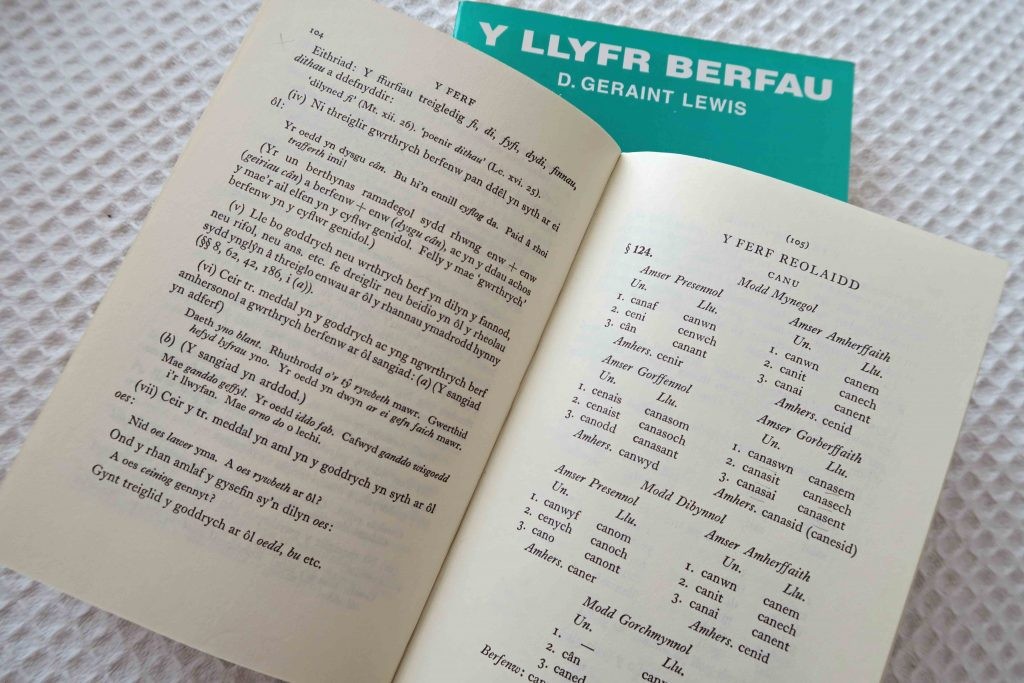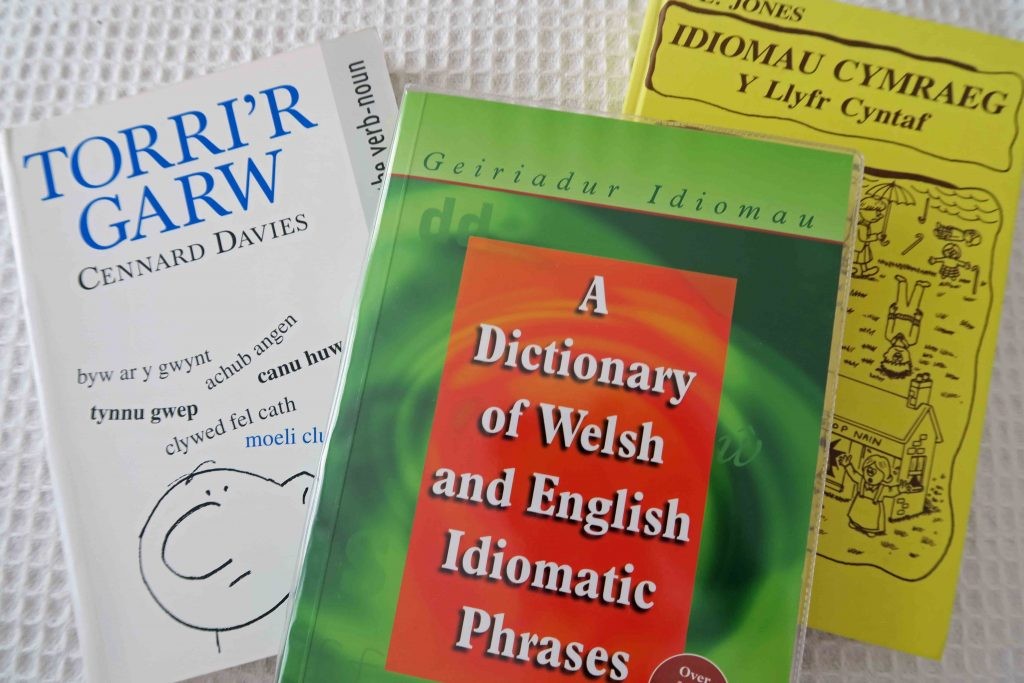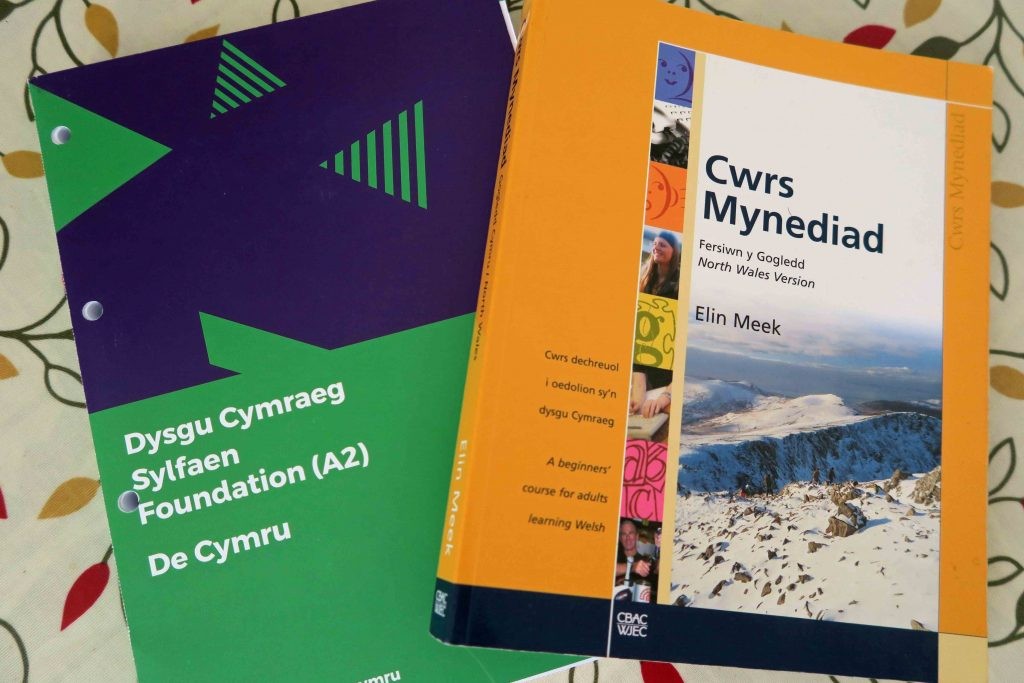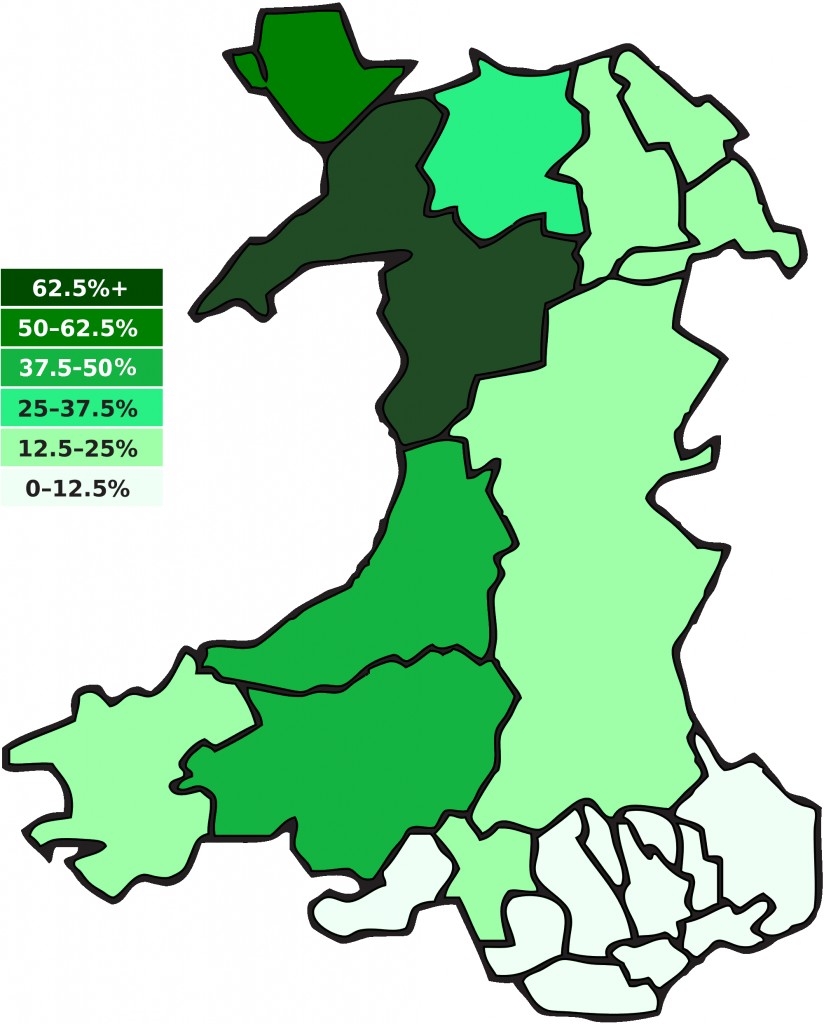Learning Welsh can seem like a daunting task, but how difficult is it really? At LEARNS.EDU.VN, we believe that with the right approach and resources, anyone can master this beautiful language and you will understand all the nuances and strategies that can make your learning journey smoother and more enjoyable. Discover practical tips, effective learning methods, and resources to help you achieve fluency in Welsh and gain language proficiency.
1. Understanding the Challenge of Learning Welsh
The question “How Hard Is It To Learn Welsh” is a common one for prospective language learners. Welsh, a Celtic language spoken primarily in Wales, presents unique challenges and rewards. To assess its difficulty, let’s examine various aspects, including pronunciation, grammar, vocabulary, and available resources.
1.1. The Objective Difficulty of Languages
Before diving into the specifics of Welsh, it’s essential to understand how languages are generally categorized by difficulty. The Foreign Service Institute (FSI) categorizes languages based on the time required for English speakers to achieve proficiency.
1.2. FSI Language Difficulty Categories
The FSI uses five categories to rank languages:
| Category | Hours Needed | Languages |
|---|---|---|
| I | 575-600 | European Romance languages (French, Spanish, Italian, etc.) and Germanic languages (Danish, Swedish, Dutch, Norwegian). |
| II | 750 | German |
| III | 900 | Swahili, Indonesian |
| IV | 1100 | Russian, Greek, Finnish |
| V | 2200 | Arabic, Japanese, Chinese, Korean |







Welsh is not on the FSI list, so we need to evaluate it based on its characteristics and compare it to languages within these categories.
2. Pronunciation Challenges in Welsh
One of the first hurdles for learners is mastering Welsh pronunciation. While many sounds are familiar to English speakers, some unique sounds require practice.
2.1. Unique Welsh Sounds
- ll: This sound doesn’t exist in English or most other European languages. It’s produced by placing the tongue in the “l” position and hissing, similar to “thl” or the “ch” in Scottish “loch.”
- rh: This involves trilling the “r” while strongly exhaling, combining a rolled “r” with an “h” sound.
- ng: While the “ng” sound exists in English (as in “sing”), it doesn’t typically appear at the beginning of words.
- Rolled r: Similar to Spanish, the rolled “r” can be challenging for some English speakers.
2.2. Vowel Sounds
Welsh vowels can be long or short, similar to English (e.g., “cat” vs. “father”). The distinction is crucial as it can change the meaning of words.
2.3. Diphthongs and Triphthongs
Welsh has several combined vowels (diphthongs and triphthongs), with most being similar to English. However, “ew” (a short “eh” followed by a quick “oo”) is unique and requires specific practice.
2.4. Stress Patterns
Syllable stress in Welsh is generally predictable, usually falling on the second-to-last syllable. This regularity contrasts with languages like Russian or English, where stress can be more variable.
3. Demystifying Welsh Spelling
Despite its appearance, Welsh spelling is remarkably consistent. Unlike English, where the same letter can represent multiple sounds, Welsh letters generally have a single, predictable pronunciation.
3.1. Key Spelling Differences
- w: Represents the “u” sound, as in “cwm” (valley).
- y: Usually a vowel sound, similar to the “u” or “i” in English, as in “cyn” (before).
- ff: Represents the “f” sound, while “f” represents the “v” sound, as in “Fforest Fach” (Little Forest).
- Circumflex Accent: Indicates a long vowel sound where a short vowel would typically be expected.
3.2. Tricky Aspects of Spelling
- y: Can represent three sounds: the short or long “i” (as in “bit” and “beat”) and the “schwa” sound at the beginning of “alone.”
- Doubled r and n: Sometimes doubled, which can be tricky but follows specific rules.
3.3. Spelling System
The Welsh spelling system, though initially daunting, proves to be simpler and more logical than English spelling.
4. Sentence Structure in Welsh
Welsh sentence structure differs significantly from English, which can be a challenge for learners.
4.1. Verb-Subject-Object (VSO)
Welsh follows a Verb-Subject-Object (VSO) word order, unlike the Subject-Verb-Object (SVO) structure of English.
4.2. Emphasis Through Rearrangement
Welsh allows for rearranging sentence structure to emphasize specific elements. For example, “Chwerthin oedd e” (Laughing he was) emphasizes the action of laughing.
4.3. Adjective Placement
Adjectives typically follow the noun, similar to French. For example, “y ci mawr” translates to “the big dog,” with “ci” (dog) preceding “mawr” (big).
5. Understanding the Welsh Verb System
The Welsh verb system can appear complex initially but offers a manageable learning curve with practical strategies.
5.1. Inflected Verb Forms
Welsh verbs are inflected, meaning they change form to indicate tense and person.
5.2. Key Tenses
The primary tenses include:
- Pluperfect
- Imperfect
- Past
- Present
- Future
- Conditional
5.3. Simplified Spoken Welsh
In spoken Welsh, only the imperfect, past, and future tenses are commonly used, simplifying the learning process.
5.4. Irregular Verbs
There are only five common irregular verbs:
- Dod (to come)
- Mynd (to go)
- Cael (to get/have)
- Gweneud (to do)
- Bod (to be)
5.5. Compound Tenses
Compound tenses are formed using the verb “bod” (to be) along with the dictionary form of the main verb and the particle “yn.” For example, “dwi’n bwyta” (I am eating).
5.6. Tense Usage
Tense usage in Welsh closely mirrors English, making it easier for English speakers to grasp.
5.7. Participle Forms
Welsh lacks complex participle forms, further simplifying verb conjugation.
6. Vocabulary Acquisition in Welsh
Acquiring Welsh vocabulary requires effort, but understanding word formation and leveraging available resources can significantly ease the process.
6.1. Limited English Loanwords
Unlike languages that share Germanic or Romance roots with English, Welsh has few direct loanwords, meaning learners must build their vocabulary from scratch.
6.2. Related Concepts
Learning related concepts with a common core can aid vocabulary acquisition. For example, “llyfr” (book), “llyfrgell” (library), and “llyfryddiaeth” (bibliography).
6.3. Compound Words
Welsh often forms compound words logically using native prefixes. For example, “rhyngwladol” (international) is derived from “rhwng” (between) and “gwlad” (country).
6.4. Neologisms
Welsh is adept at coining new words, often translating Latin terms. Examples include “rhyngrwyd” (internet) and “gwefan” (website).
6.5. Untranslatable Words
Like all languages, Welsh has untranslatable words like “hiraeth,” which captures a deep, nostalgic yearning.
6.6. Latin Loanwords
Welsh borrowed Latin vocabulary during Roman rule, providing some recognizable words for learners familiar with Romance languages. Examples include “pont” (bridge) and “eglwys” (church).
6.7. English Loanwords
Many English loanwords exist in Welsh, some having been integrated for centuries. Modern loanwords are easily recognizable once learners understand the Welsh spelling system.
6.8. Bilingualism Advantage
Since most Welsh speakers are bilingual in English, learners can use English words when unsure, sometimes “Welshifying” them by adding “-o” or “-io” to create new verbs.
7. Noun Genders in Welsh
Welsh nouns are divided into masculine and feminine genders, which can impact grammar and word choice.
7.1. Two Genders
Welsh nouns are either masculine or feminine, influencing articles and adjectives.
7.2. Gender Assignment
Gender assignment is not always predictable, but it’s essential to learn the gender of each noun as it’s encountered.
7.3. Masculine Default
If unsure, guessing masculine is often correct, as approximately 60% of Welsh nouns are masculine.
8. Plural Formation in Welsh
Welsh has multiple ways of forming plurals, more than many other languages, requiring learners to memorize various patterns.
8.1. Common Plural Endings
- -au
- -iau
8.2. Other Plural Endings
- -on/-ion
- -i
- -ydd
- -oedd
- -od
- -iaid
8.3. Vowel Changes
Sometimes vowel changes occur, such as “bardd/beirdd” (poet/s) or “llygad/llygaid” (eye/s).
8.4. Singular Endings
Occasionally, the singular form takes an ending, particularly for mass nouns like “gwallt” (hair) and “plant” (children).
8.5. Learning Plurals
Learning plurals alongside nouns and developing a “feel” for patterns is crucial.
9. Idiomatic Expressions in Welsh
Welsh is rich in idioms, adding depth and color to the language. While mastering idioms takes time, learners can take comfort in the presence of many English idioms adopted into Welsh.
9.1. Native Idioms
Like every language, Welsh boasts a wealth of colorful idioms that enrich communication.
9.2. Adopted Idioms
Welsh has adopted many English idioms, particularly in modern usage, making it easier for learners to grasp common expressions.
10. Navigating Welsh Mutations
Mutations, where initial consonants change based on grammatical context, are a significant challenge in Welsh.
10.1. Three Types of Mutation
- Soft
- Aspirate
- Nasal
10.2. Mutation Triggers
Mutations occur in various contexts, such as after the definite article “y” or with possessive pronouns.
10.3. Affected Letters
The letters affected by mutations are c, p, t, g, b, d, rh, and ll.
10.4. Practical Approach
While mastering mutations requires practice, learners shouldn’t obsess over them. Misunderstandings are rare, and native speakers sometimes vary in their usage.
11. Absence of a Case System
One advantage for learners is that Welsh lacks a case system, simplifying noun and adjective declension.
11.1. No Case Endings
Welsh does not have case endings to indicate the relationship between words in a sentence, unlike languages like German or Russian.
12. Answering “Yes” and “No” in Welsh
Answering “yes” and “no” in Welsh is unique, as there are no direct equivalents. Instead, learners must repeat the verb from the question in the affirmative or negative.
12.1. Verb Repetition
Answers involve repeating the verb from the question in the positive or negative form.
12.2. Person Adjustment
Sometimes, the person must be adjusted to fit the answer.
12.3. Generic Terms
While “ie” and “nage” exist as generic terms for “yes” and “no,” they are less commonly used in formal contexts.
13. Counting in Welsh
Welsh has a complex number system, with traditional Celtic counting alongside modern decimal counting.
13.1. Traditional System
The traditional system counts in twenties, as seen in “naw ar ddeg ar bedwar ugain” (nine on ten on four twenties) for ninety-nine.
13.2. Modern System
The modern system is decimal-based, with “naw deg naw” (nine ten nine) also meaning ninety-nine.
13.3. Number Recognition
Learners need to recognize both systems, as traditional numbers are still used, especially for ages.
14. Regional Variations in Welsh
Regional variations exist in Welsh, primarily between North and South Wales, affecting vocabulary and verb forms.
14.1. North-South Divide
The primary regional division is between North and South Wales, though variations are more nuanced.
14.2. Confusion for Learners
Variations can initially confuse learners, but focusing on one regional variety is recommended.
14.3. Learning Resources
Learning resources often come in North and South Wales versions, such as the SaysomethinginWelsh course.
14.4. Regional Varieties
Regional varieties in Welsh do exist.
15. Differences Between Spoken and Written Welsh
Significant differences exist between spoken and written Welsh, particularly in verb forms and grammatical structures.
15.1. Literary Welsh
Formal written Welsh differs more from spoken Welsh than formal written English does from spoken English.
15.2. Verb Forms
Written Welsh uses short-form verbs and subjunctive forms more frequently than spoken Welsh.
15.3. Grammatical Patterns
Some grammatical patterns are more common in writing than in speech.
15.4. Abbreviated Constructions
Verbal constructions abbreviated in speech are often written in full in literary Welsh.
15.5. Modern Written Welsh
Modern written Welsh, such as journalism, often uses simplified forms, making it more accessible to learners.
15.6. Course Materials
Modern course materials prioritize conversational language, introducing literary forms at the intermediate level.
16. Availability of Learning Resources
A good range of classes are available within Wales, including residential courses running from one weekend to many weeks. There are also a good range of books and some good online courses materials. One-to-one online lessons through italki.com, but there are currently four Welsh teachers.
16.1. Online Lessons
There are currently four Welsh teachers.
17. Impact of Minority Language Status
The “minority language dimension” can be challenging, as not everyone in Wales speaks Welsh, requiring learners to be strategic about where they practice.
17.1. Strategic Practice
Learners need to choose where to practice Welsh, as not everyone in Wales speaks the language.
17.2. Attitudes Towards the Language
Attitudes toward the language can be complex, requiring learners to navigate varied perspectives.
17.3. New Fascination
These challenges can add new layers of fascination to the learning experience.
18. Welsh on the FSI Language Scale
Based on the above analysis, Welsh likely belongs in Category II of the FSI language scale, alongside German.
18.1. Comparison to Romance Languages
Romance languages are easier due to more shared vocabulary and simpler sentence structure.
18.2. Comparison to German
While German has case endings and complex subordinate clauses, Welsh has a richer verb system and mutations.
18.3. Minority Status Impact
The minority status of Welsh adds difficulty, as opportunities for immersion are less prevalent compared to languages like German.
19. Practical Steps to Learn Welsh Effectively
To make the Welsh learning journey smoother, consider these practical steps:
19.1. Set Clear Goals
Clearly define your reasons for learning Welsh to maintain motivation.
19.2. Focus on Pronunciation Early
Mastering pronunciation early builds confidence and prevents the entrenchment of incorrect habits.
19.3. Use Consistent Resources
Stick to a set of core learning materials to avoid confusion from conflicting information.
19.4. Practice Regularly
Consistent, daily practice, even for short periods, is more effective than sporadic, lengthy sessions.
19.5. Immerse Yourself
Surround yourself with the language through music, podcasts, and media to improve comprehension.
19.6. Find a Language Partner
Practicing with a native speaker or fellow learner provides valuable feedback and enhances fluency.
19.7. Embrace Mistakes
Don’t fear mistakes; they are a natural part of the learning process. Embrace them as opportunities for growth.
19.8. Celebrate Progress
Acknowledge and celebrate milestones to stay motivated and reinforce learning.
19.9. Utilize Technology
Use language learning apps, online dictionaries, and other digital tools to augment your learning.
19.10. Explore Welsh Culture
Engage with Welsh culture through literature, film, and history to deepen your understanding and appreciation of the language.
20. Additional Resources for Learning Welsh
Explore these resources to support your Welsh learning journey:
| Resource Type | Resource | Description |
|---|---|---|
| Online Courses | SaySomethinginWelsh | A popular online course focusing on spoken Welsh. |
| Textbooks | Teach Yourself Welsh | A comprehensive textbook for beginners. |
| Dictionaries | Gweiadur | An online Welsh dictionary. |
| Language Exchange | italki | Platform to find Welsh tutors and language partners. |
| Cultural Resources | BBC Cymru Wales | News and programs in Welsh. |
| Learning Apps | Memrise, Duolingo | Apps for vocabulary building and grammar practice. |
| Immersion Programs | Nant Gwrtheyrn | The Welsh Language and Heritage Centre offering intensive courses. |
| Community Groups | Local Welsh Societies | Opportunities to practice Welsh with native speakers and other learners. |
| Social Media | Welsh-language groups on Facebook, Twitter | Connect with other learners and access Welsh content. |
| Podcasts & YouTube | Numerous Welsh-language podcasts and YouTube channels | Content for listening practice and cultural insights. |
| Welsh Government | Learning Welsh | Official resources for learners. |
21. FAQ: Frequently Asked Questions About Learning Welsh
21.1. Is Welsh harder to learn than Spanish?
Welsh presents unique challenges in pronunciation and grammar that Spanish does not. The Foreign Service Institute (FSI) ranks languages by difficulty, and while Welsh isn’t on their list, its complexities suggest it may be more challenging than Spanish for English speakers.
21.2. Can I become fluent in Welsh if I study online?
Yes, many online resources can help you become fluent in Welsh. Platforms such as SaySomethinginWelsh offer comprehensive courses focusing on spoken Welsh.
21.3. How long does it take to learn Welsh?
The time it takes to learn Welsh varies depending on your dedication, study habits, and exposure to the language.
21.4. What are the most common mistakes learners make when learning Welsh?
Common mistakes include mispronouncing mutated consonants, incorrect verb conjugations, and not using the appropriate register (formal vs. informal) in different contexts.
21.5. Are there any Welsh dialects I should be aware of?
Yes, there are regional dialects, primarily divided between North and South Wales. It’s helpful to be aware of these variations, but focusing on one dialect is usually best for beginners.
21.6. How important is it to visit Wales to learn Welsh?
Visiting Wales can greatly enhance your learning experience by providing immersion and opportunities to practice with native speakers.
21.7. What’s the best way to improve my Welsh pronunciation?
Listen to native speakers, practice regularly, and record yourself speaking to identify areas for improvement.
21.8. Are there any Welsh cultural aspects that can aid language learning?
Yes, exploring Welsh music, literature, and history can deepen your understanding of the language and provide additional context for vocabulary and grammar.
21.9. How can I find a Welsh language partner?
Online platforms like italki connect language learners with native speakers for practice and language exchange.
21.10. What are some good Welsh TV shows or movies for learners?
“Pobol y Cwm” is a long-running Welsh soap opera that can help improve listening comprehension.
22. Conclusion: Embracing the Welsh Language Learning Journey
“How hard is it to learn Welsh?” The answer is nuanced and depends on individual factors and learning strategies. While Welsh presents unique challenges such as pronunciation, mutations, and grammatical structures, it also offers a rich cultural experience and the reward of mastering a unique Celtic language.
At LEARNS.EDU.VN, we are committed to providing you with the resources and support you need to successfully learn Welsh. Remember, the journey of learning a new language is not just about overcoming difficulties, but also about discovering new perspectives and connecting with a vibrant culture.
Ready to embark on your Welsh learning adventure? Visit LEARNS.EDU.VN today to explore our comprehensive language resources and start your journey towards fluency. For personalized guidance and support, contact us at 123 Education Way, Learnville, CA 90210, United States, or reach out via Whatsapp at +1 555-555-1212. Let learns.edu.vn be your trusted partner in mastering the Welsh language.